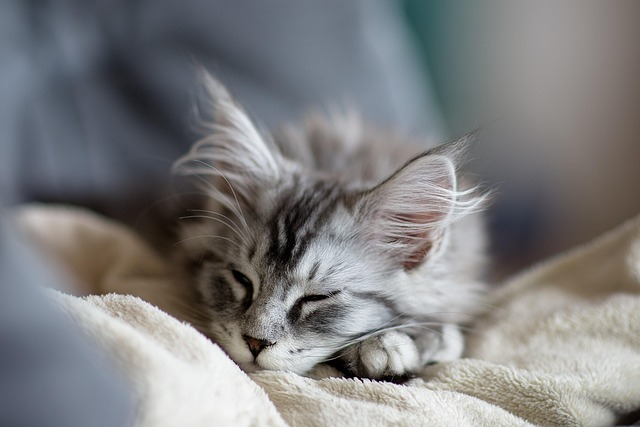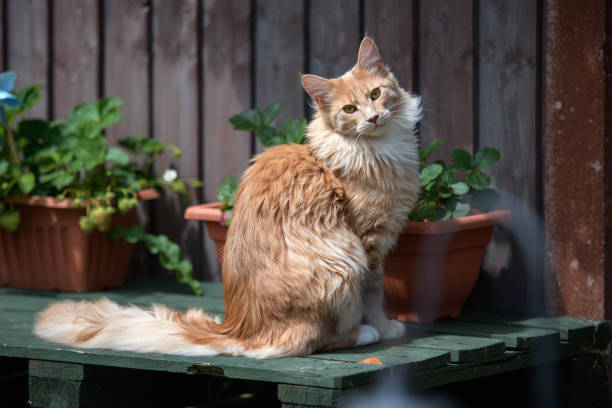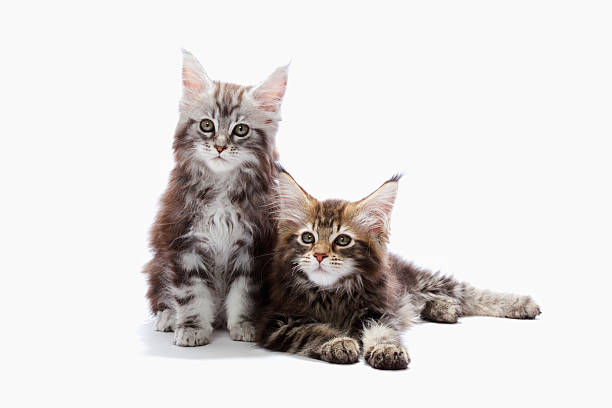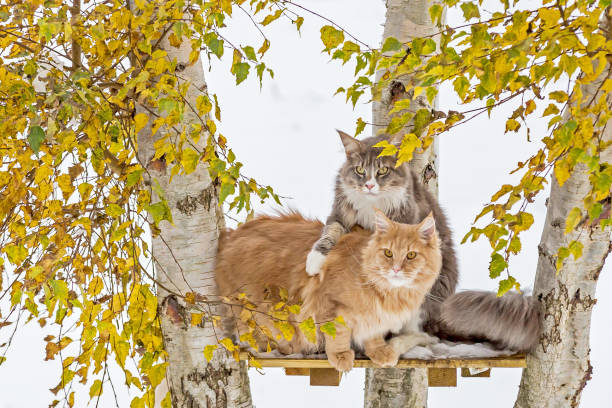Maine Coon: The Gentle Giant of the Feline World
The Maine Coon cat is more than just a pet—it’s a regal companion with a commanding presence and a heartwarming disposition. Revered for its size, intelligence, and affectionate personality, the Maine Coon breed of cat has captivated feline enthusiasts across the globe. With its lush fur, tufted ears, and lion-like mane, this breed epitomizes both rugged beauty and refined grace
Table of Contents
Scientific Classification
- Kingdom: Animalia
- Phylum: Chordata
- Class: Mammalia
- Order: Carnivora
- Family: Felidae
- Genus: Felis
- Species: Felis catus
- Breed: Maine Coon
Description / Physical Description
Maine Coons are among the largest domesticated cats in the world. The giant Maine Coon cat can weigh between 13 to 18 pounds on average, with males occasionally reaching over 20 pounds. Their bodies are long and muscular, with a broad chest and a well-balanced frame.
A signature feature of this Maine Coon breed description is the thick, water-repellent double coat, perfect for harsh northern climates. Their ruff—reminiscent of a lion’s mane—encircles the neck, especially prominent in males.
Maine Coon cat features include high cheekbones, expressive almond-shaped eyes (often gold or green), and lynx-like ear tufts. Their bushy tails are long and plumed, often used like a blanket for warmth.

Range & Distribution
Originally native to the United States, the Maine Coon is often considered America’s first indigenous long-haired cat. As the name suggests, the breed originated in Maine, where it is the official state cat.
From its regional roots in the Northeast, the breed has spread across North America and into Europe and Asia. Maine Coons are particularly popular in the United States, United Kingdom, Russia, and Scandinavian countries.
Habitat
Maine Coon house cats are highly adaptable. Historically, they thrived on rural farms and in barns, utilizing their mousing skills to protect grain stores. Today, they are equally comfortable in urban apartments, suburban homes, or country estates.
While discussing where do Maine Coon cats live, it’s crucial to note their strong preference for elevated spaces. Shelves, cat trees, and high ledges are ideal for satisfying their natural climbing instincts.
Diet
As obligate carnivores, Maine Coons require a protein-rich diet. Their meals should include high-quality animal proteins such as chicken, turkey, and fish.
In the wild or semi-feral settings, these cats hunt rodents and small birds. For indoor Maine Coon pets, portion control is critical, given their tendency to overeat and gain weight.
Fresh water should be readily available at all times, and many owners report that Maine Coons are fascinated by running water sources.

Behaviour / Lifestyle
The Maine Coon cat personality traits are a delightful blend of sociability and independence. Often referred to as “dog-like,” they form strong bonds with their families and may follow their owners from room to room.
They are vocal cats, known for their soft chirps and trills rather than typical meows. Maine Coons are playful well into adulthood and enjoy puzzle toys, fetch, and interactive play.
Their lifestyle is marked by curiosity and patience, making them excellent companions for both families and single-person households.

Lifespan
With proper care, a Maine Coon pet can live between 12 to 15 years, though many have been known to live well beyond this range.
Factors influencing lifespan include genetics, diet, activity level, and access to routine veterinary care. Regular screenings for genetic issues such as hypertrophic cardiomyopathy (HCM) are advisable.

Adaptations
Maine Coons are built to withstand cold and rugged environments. Their thick, layered coats insulate against snow and rain, while their large, tufted paws function like snowshoes, allowing them to walk gracefully across icy surfaces.
Another key adaptation includes their bushy tail, which they wrap around themselves for added warmth during sleep.
They also exhibit a high degree of cognitive flexibility—one of the less commonly mentioned facts about Maine Coon cats—which allows them to learn tricks and solve food puzzles with remarkable ease.

Mating & Reproduction / Reproduction & Lifecycle
Maine Coon cats typically reach sexual maturity around 10–12 months of age, though larger individuals may mature slightly later.
Mating season varies based on climate and living conditions. Females may produce 1 to 6 kittens per litter, and gestation lasts approximately 63–68 days.
What are Maine Coon kittens like? They are born with shorter fur and grow steadily over several years. Unlike many other cats, Maine Coons take up to 3 to 5 years to reach full maturity, showcasing a slow and steady developmental pace.

Predators
As domestic cats, adult Maine Coons face few natural predators. However, when left outdoors, they may be vulnerable to larger predators like coyotes, foxes, and large birds of prey.
Kittens and juveniles are at a higher risk and should be supervised during outdoor excursions to prevent incidents.
Conservation Status
Maine Coons are not endangered. In fact, they are one of the most popular cat breeds globally, especially in the United States.
However, responsible breeding practices are crucial to maintaining genetic health. Overbreeding or inbreeding can lead to hereditary conditions such as spinal muscular atrophy and polycystic kidney disease.
Breed preservation efforts are coordinated by major cat fancier associations such as the CFA (Cat Fanciers’ Association) and TICA (The International Cat Association).
Interesting Facts
- The Maine Coon was the first cat breed to win a cat show in the United States, in 1895.
- Their ancestors may include long-haired cats brought to America by Viking explorers or 18th-century seafarers.
- Maine Coons are excellent swimmers, a rare trait among domestic cats.
- They’ve been dubbed the “dogs of the cat world” for their trainability and loyalty.
- A giant Maine Coon cat named Barivel holds the Guinness World Record for the longest domestic cat at over 3 feet long.

As Pets
Maine Coons make exceptional companions. Their friendly temperament, intelligence, and striking appearance make them ideal for homes with children, seniors, and even dogs.
Information on Maine Coon cats often highlights their minimal aggression and gentle play style. Despite their size, they are rarely destructive and prefer gentle, consistent interaction.
Their grooming needs are moderate. While their coat resists matting, regular brushing—2–3 times a week—is essential to manage shedding and prevent tangles.
Maine Coon cat care includes:
- Routine dental hygiene
- Claw trimming
- Annual veterinary check-ups
- Enrichment through play and exploration
Those wondering how to care for Maine Coon cats or looking for a Maine Coon care guide should be prepared for both affection and occasional aloofness. They appreciate attention but enjoy solitude as well.

Classification of Species
The Maine Coon is a breed under the Felis catus species. While not a wild species or subspecies, the Maine Coon breed of cat is classified as a distinct pedigree with breed standards recognized by major feline associations.
Subspecies
There are no true subspecies of the Maine Coon, but variations exist in coat colors and patterns. These include:
- Brown Tabby (the classic look)
- Silver Tabby
- Solid colors (black, white, blue)
- Tortoiseshell
- Calico
- Smoke variants
Despite these differences, all fall under the recognized Maine Coon breed category and share core traits in structure, personality, and behavior.
Maine Coons are a majestic convergence of utility, beauty, and affection. Whether curled at your feet or playfully trailing behind you, they embody everything a cat lover could want—making them an enduring favorite among domestic cat breeds.



